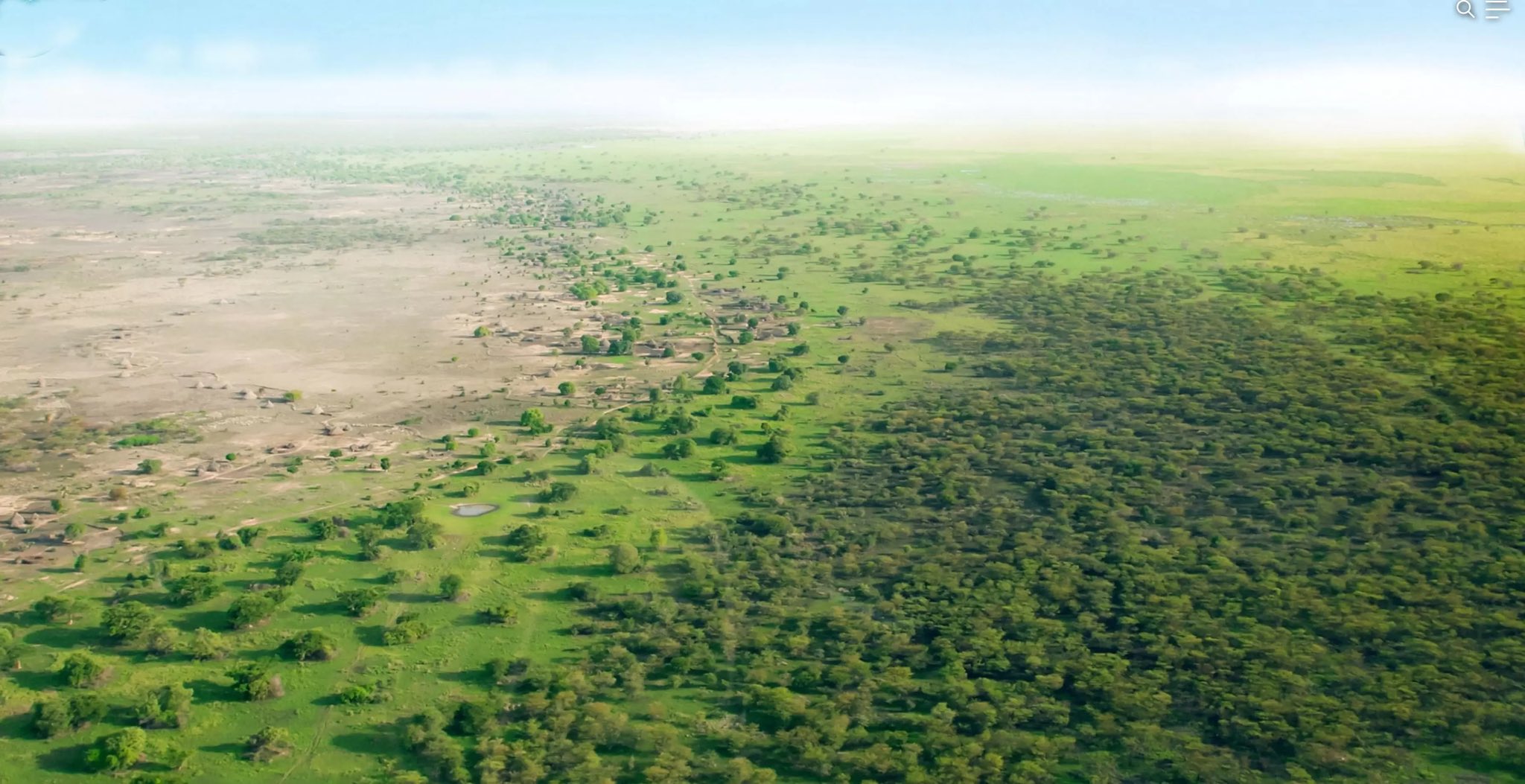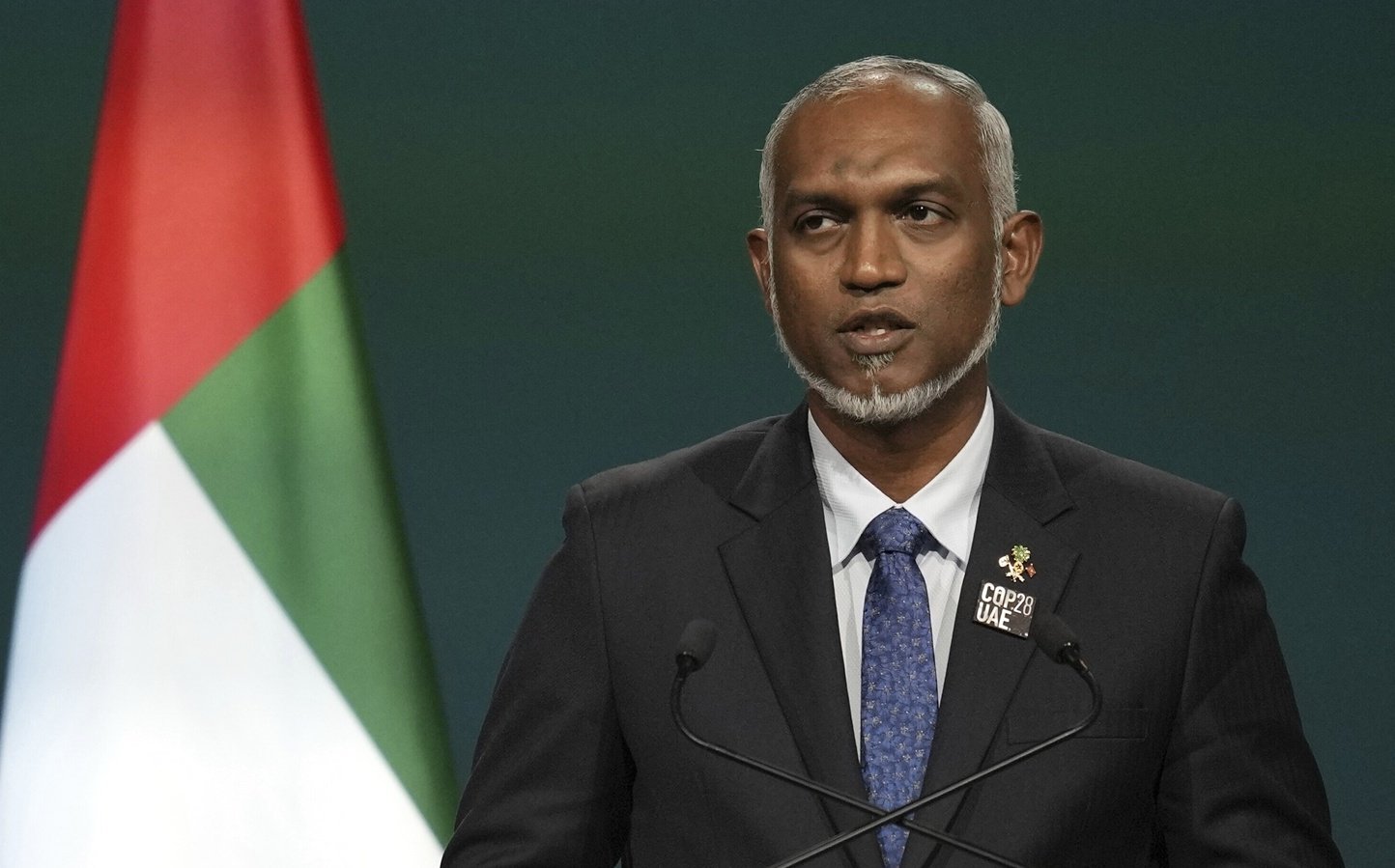In the heart of Africa, an audacious project stretches its green tendrils across the Sahel, aiming to transform the arid landscape into a thriving Eden. Dubbed the Great Green Wall, this bold initiative isn’t just about battling the Sahara’s relentless encroachment; it’s about weaving a tapestry of life, community, and sustainability across a continent.
A Green Revolution Across the Sahel
Initiated in 2007 by the African Union, the Great Green Wall seeks to halt the southward spread of the Sahara Desert, a phenomenon that threatens the livelihoods of millions. Stretching an ambitious 8,000 kilometres from Senegal in the west to Djibouti in the east, the project aspires to be the largest living structure on the planet, three times the size of the Great Barrier Reef.
But the Wall is more than a mere barrier; it’s a beacon of hope, aiming to restore 100 million hectares of currently degraded land, sequester 250 million tons of carbon, and create 10 million green jobs by 2030. This isn’t just environmental activism; it’s a blueprint for a sustainable future.
Great Green Wall: A Testament to Resilience and Ingenuity
The Great Green Wall stands as a testament to African resilience and ingenuity, embodying the spirit of cooperation and forward-thinking. It’s a story of communities coming together, of nations uniting for a cause greater than themselves. From the lush mangroves of Senegal to the ethereal landscapes of Djibouti, the project is a mosaic of ecosystems, each with its unique challenges and solutions.
In Senegal, the project has breathed new life into the land, with villages witnessing the return of birds, insects, and wildlife long thought vanished. In Nigeria, innovative techniques like farmer-managed natural regeneration have revitalised barren landscapes, turning them into verdant pastures and farmlands.
Reversing the Tide: How the Great Green Wall Nurtures Stability and Prosperity
The relentless expansion of the Sahara Desert has profoundly impacted lives and livelihoods, triggering both internal and external migration within Senegal and across Africa. As arable land turns to desert, communities face the dire choice of leaving their ancestral homes in search of better opportunities. This migration is not just a journey across physical distances; it’s a desperate quest for survival, often leading to crowded cities where newcomers struggle to adapt and thrive.
Enter the Great Green Wall initiative, a beacon of hope in this challenging landscape. By aiming to halt the desert’s advance, this ambitious project promises to rejuvenate the land, making it hospitable and productive once again. The Great Green Wall isn’t just about planting trees; it’s about planting seeds of economic opportunity, stability, and sustainability for local communities.
As the Wall grows, so does its potential to reverse migration trends. By creating green jobs, restoring agricultural lands, and improving food security, the initiative offers a compelling reason for people to stay or return to their homes. It envisages a future where the Sahara’s expansion no longer displaces communities but instead nurtures a region where people can live, work, and flourish. The Great Green Wall stands as a testament to Africa’s resilience, showing the world that even the harshest environments can be transformed into havens of life and prosperity.
Challenges on the Horizon
Yet, the journey is not without its hurdles. Critics point to the slow progress, with only a fraction of the intended land restored. Funding, too, has been a bottleneck, although recent commitments, including a substantial $14 billion pledge at the One Planet Summit, have reinvigorated efforts. The project’s success hinges on its ability to adapt, to meld traditional knowledge with modern science in a symphony of environmental restoration.
The Social Fabric of the Great Green Wall
Beyond its environmental goals, the Great Green Wall weaves a rich social fabric, empowering communities, particularly women and youth, with the tools and knowledge to sustain their lands and futures. It’s about food security, resilience against climate change, about creating a legacy of green growth that can be handed down through generations.
A Story Still Being Written
The Great Green Wall is a story still being written, a narrative of hope, struggle, and the relentless pursuit of a greener, more sustainable Africa. It’s a reminder that even the most ambitious dreams can take root in the harshest soils, growing into something beautiful and life-sustaining.
As this living wonder continues to grow, so does its story, inspiring the world with its vision of greenery and growth in the face of adversity. The Great Green Wall isn’t just Africa’s fight against desertification—it’s a global emblem of what can be achieved when we unite for the health of our planet.
In this tale of green resilience, every tree planted is a symbol of hope, and every restored hectare is a victory against desertification. The Great Green Wall is not just planting trees; it’s sowing the seeds of a future where humanity and nature thrive in harmony. Let’s all root for its success, for in its leaves lies the blueprint for a greener, more prosperous world.
Objectives in a nutshell:
The Great Green Wall initiative aims to achieve a set of ambitious objectives designed to combat desertification, improve lives, and transform the Sahel region. These objectives include:
Restoration of Degraded Land: Restore 100 million hectares of currently degraded land, aiming to significantly reduce land degradation and desertification.
Carbon Sequestration: Sequester 250 million tons of carbon, contributing to global efforts to mitigate climate change.
Creation of Green Jobs: Create 10 million green jobs, fostering sustainable economic development and improving livelihoods across the region.
Enhancement of Food Security: Enhance food security for millions of people, ensuring communities have reliable access to nutritious food.
Strengthening of Resilience: Strengthen the resilience of the region’s landscapes and communities to climate change, helping them adapt to environmental changes and variability.
Biodiversity Conservation: Promote biodiversity conservation by creating a habitat for local flora and fauna, contributing to the preservation of the region’s natural heritage.
Community Empowerment: Empower local communities, especially women and youth, by involving them in project planning and implementation, ensuring the sustainability of the initiative.
Promotion of Sustainable Land Management Practices: Encourage the adoption of sustainable land management practices, enhancing soil health and agricultural productivity.
Boosting Regional Cooperation: Foster regional cooperation and solidarity among the African countries involved, promoting peace and stability through environmental stewardship.
Several greening and reforestation projects around the world mirror the ambition and scope of the Great Green Wall initiative. These projects aim to combat desertification, restore ecosystems, and improve livelihoods through sustainable land management practices. Here are some notable examples:
The Billion Tree Tsunami in Pakistan: Launched in 2014, this project aimed to combat deforestation and climate change by planting 1 billion trees in the Khyber Pakhtunkhwa province. The initiative has since expanded to the “Ten Billion Tree Tsunami” with a goal of planting 10 billion trees across Pakistan to restore the country’s forests.
China’s Three-North Shelter Forest Program (Green Great Wall): Initiated in 1978, this is a multi-decade project aimed at slowing the expansion of the Gobi Desert through the planting of a massive belt of trees across northern China. It seeks to improve soil conservation, reduce dust storms, and enhance the environment.
Brazil’s Atlantic Forest Restoration Pact: This collaborative effort aims to restore 15 million hectares of the Atlantic Forest by 2050. The project focuses on one of the world’s most biodiverse and also most threatened tropical forests, seeking to reverse centuries of deforestation and habitat loss.
The Bonn Challenge: Launched in 2011, the Bonn Challenge is a global effort to restore 150 million hectares of the world’s deforested and degraded lands by 2020, and 350 million hectares by 2030. It brings together national governments, non-governmental organizations, and private sector participants in a collective effort to combat climate change and biodiversity loss.
Ethiopia’s Green Legacy Initiative: In a bold move to counter environmental degradation, Ethiopia launched this initiative aiming to plant billions of trees across the country. The project set a world record by planting over 350 million trees in a single day in 2019.
Afforestt and the Miyawaki Method: Based on the Miyawaki method developed in Japan, this approach to afforestation creates densely packed, native forests that grow more quickly and are more biodiverse than conventional plantations. Afforestt, a company that promotes this method, has helped establish such forests in various countries, including India, to combat urban pollution and restore natural habitats.
The Great Green Wall for the Sahara and the Sahel Initiative: While similar in name to the Great Green Wall of Africa, this initiative is part of a broader global effort supported by various countries and international organizations to implement sustainable land management and combat desertification in vulnerable regions.
Also Read: The Sweet Journey of Sugar: From Sharkara to Candy




